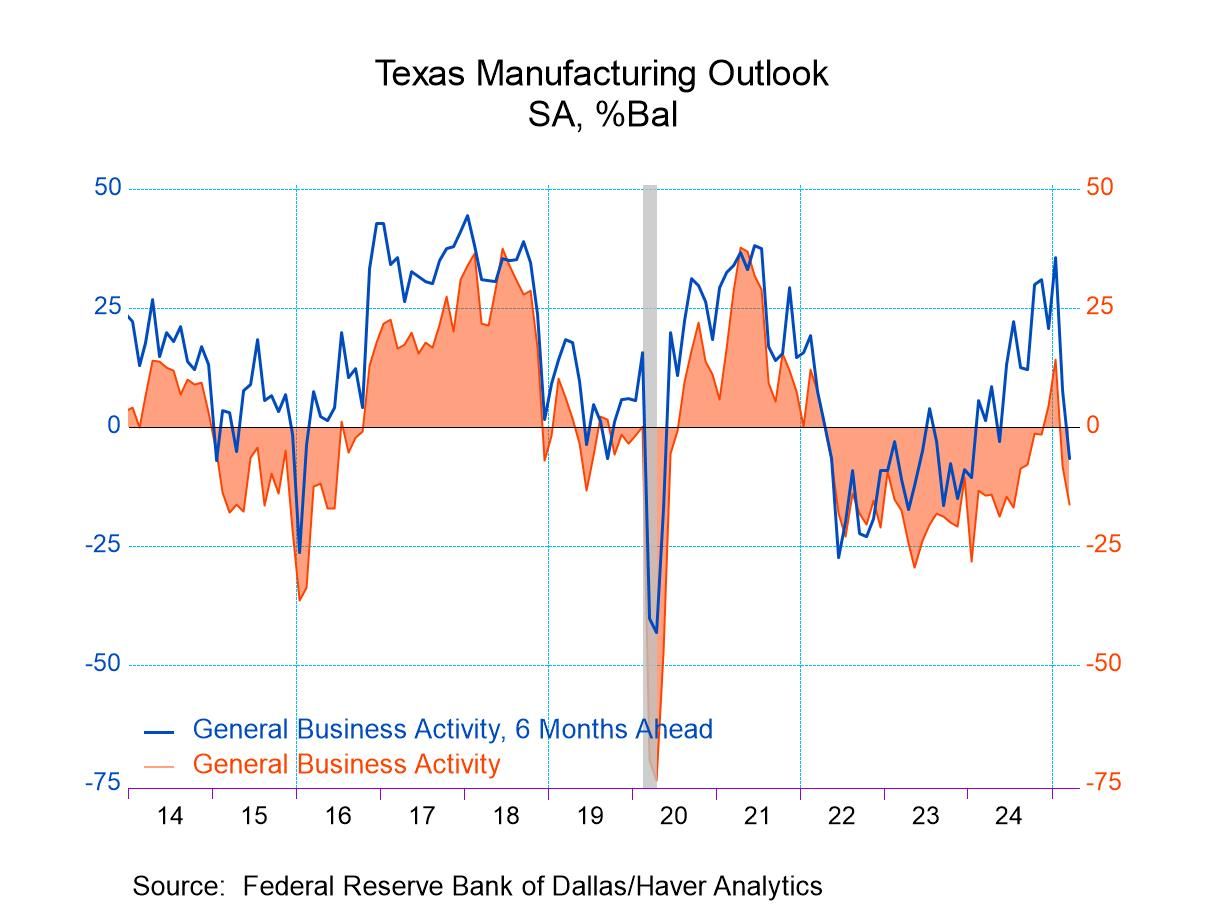Economy Watchers Index Improves But Shows Shrinkage in December

The plot of the economy watchers readings since mid-2024 paints a pretty clear picture of the performance of the economy according to this metric. The chart shows the summary. The future conditions index, the current conditions index, and the reading for current conditions employment, have all been below diffusion values of 50 on a fairly steady basis. In addition, there has been little tendency for trend to take hold; there appears to be some modest up trending going on from early-2024 to later in the year. However, more recently we see some backfilling in terms of that progress. All told it's hard to make too much out of these readings other than to note that diffusion values have been slightly below 50, indicating slight deterioration in current conditions, in the employment market, and for expected future conditions. The results are not draconian. It's really just been a period of slight underperformance by the economy and for expectations for the future and in terms of the job market.
December Current Index In December, among the nine component readings for the current index, four of them produced diffusion values above 50, indicating some net expansion. Corporate nonmanufacturers registered 50.5, the household sector generated a rating of 50.2, retailing came in at 50.4, while the services sector produced the highest reading at 51.1. All of these are readings very close to 50 and are not showing much in the way of growth. But being above 50, they are signaling some small net expansion. The contracting side of the ledger in December shows eating and drinking places with the diffusion value of 46.9, housing at 46.5, corporate manufacturers at 47.2, the overall corporate reading at 49.1, and the employment reading at 49.7. The current reading is an echo of the performance of the headlines plotted in the chart at the top, indicating a close clustering around the value of 50. There are a few sector readings with diffusion values slightly above 50 and a few with readings below 50. However, over 12 months we have net declines for all of the readings except for housing and for retailing.
Diffusion ratings pertain to month-to-month activity comparisons while the queue standings describe the December diffusion index ranked among its historic data on a longer timeline back to 2002. The ranking data put a slightly different spin on events because the current index, which is at 49.9, showing the barest decline in terms of the diffusion index, also has a queue standing at 69.6% which tells us that over this span the index has been stronger only about 30% of the time. A modest contraction is actually significantly stronger reading than Japan has been used to seeing over this 20-plus year period. Looking at the rankings across the components, we find only two have a percentile standing below their 50%-mark, employment at 29.2% along with corporate manufacturers at 47.8%.
December Future Index The future index has a diffusion reading of 48.8; that shows a weakening compared to November's reading at 49.4. In December only two components have readings above the 50th percentile, services at 52.8 and nonmanufacturing corporations at 50.1; the latter is as bare bones a reading above 50 as possible. The remaining readings are below 50 indicating net contractions. The lowest being housing at 44.5, with three readings in the 47-diffusion range for corporate manufacturers, for eating and drinking establishments, and for retailing. As we saw with the current index, the 12-month change in the future index also shows a drop in the headline of 1.6 points with drops logged across most components with an increase only in nonmanufacturing corporations and an unchanged reading for retailing.
Queue percentile standings are weaker for the future index than for the current index. Its standing is only at 51.4% for the headline with four components having readings below the 50% mark, but for the most part, significantly below the 50% mark corporate manufacturers have a percentile standing at 45.1%, eating and drinking places have a ranking at 41.5%, housing has a ranking at 40.7%, and on the outlook for employment there is a reading at 30%.
On balance, the economy watchers index does not indicate much change in Japan's economy in December. The outlook deteriorates slightly from November, but it's still roughly unchanged in its diffusion value showing only slight deterioration; that continues to be the overall picture just as for the current index where deterioration continues to be the picture despite some reduction in the pace of slowing this month. The queue standings, however, show that the current index is posting numbers that are relatively firmer compared to what they've been over the last 20 years or so. The future index is much more modestly positioned compared to its historic readings.

Robert Brusca
AuthorMore in Author Profile »Robert A. Brusca is Chief Economist of Fact and Opinion Economics, a consulting firm he founded in Manhattan. He has been an economist on Wall Street for over 25 years. He has visited central banking and large institutional clients in over 30 countries in his career as an economist. Mr. Brusca was a Divisional Research Chief at the Federal Reserve Bank of NY (Chief of the International Financial markets Division), a Fed Watcher at Irving Trust and Chief Economist at Nikko Securities International. He is widely quoted and appears in various media. Mr. Brusca holds an MA and Ph.D. in economics from Michigan State University and a BA in Economics from the University of Michigan. His research pursues his strong interests in non aligned policy economics as well as international economics. FAO Economics’ research targets investors to assist them in making better investment decisions in stocks, bonds and in a variety of international assets. The company does not manage money and has no conflicts in giving economic advice.






